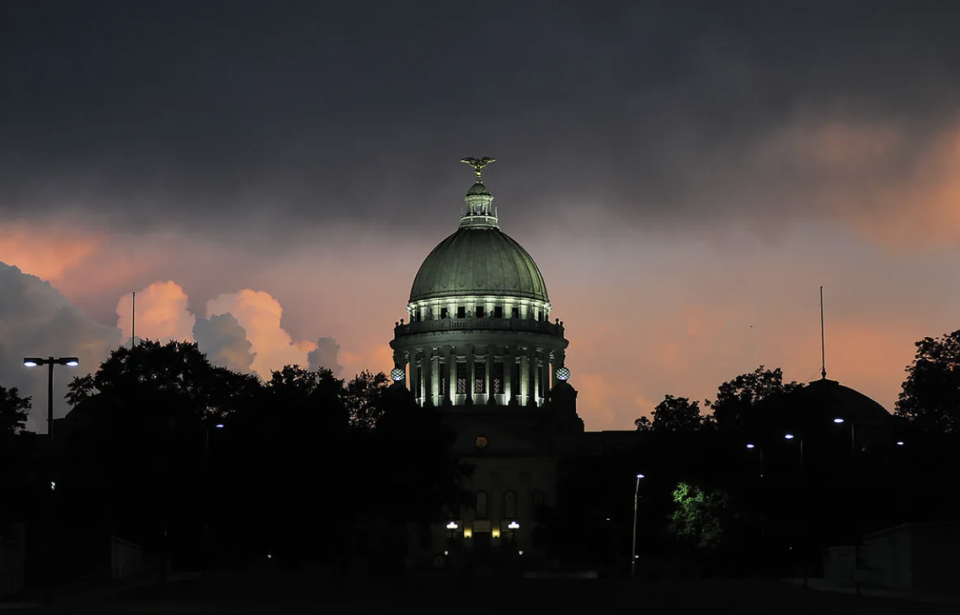How huge is Mississippi’s state Legislature? It’s bigger than California’s. But why?
At noon on Jan. 2, one of the largest law-making bodies in the country – the Mississippi Legislature – will convene for a 120-day regular session.
Mississippi has one of the largest legislatures even though the state ranks as the 35th most populous of the nation’s 50 states. And Mississippi’s population ranking has been dropping in recent decades. In 2000, for instance, Mississippi was the 32nd most populous state.
But for decades, Mississippi has had one of the nation’s biggest legislatures in terms of number of members.
Whether the fact the Mississippi Legislature is so large is good or bad for the state depends on perspective. It could be argued that Mississippi legislators represent fewer people, making them closer and more responsive to their constituents. Others could argue that the Legislature is bloated and would be more efficient with fewer members.
Perspective.

Only 13 states have lower chambers larger than the 122-member Mississippi House of Representatives. And only four states have upper chambers with more members than the 52-member Mississippi Senate.
Tiny New Hampshire has by far the largest lower chamber with a 400-member house. The second largest house is Pennsylvania with 203 members, but its senate has two fewer members than does the Mississippi Senate.
Minnesota, which also has a house larger than Mississippi’s, has the nation’s largest senate with 67 members. California, the most populous state, has a smaller Legislature than Mississippi.
The large size of the Mississippi Legislature means each member represents fewer people than do legislators in most states. Only 12 states have senate districts where the members represent fewer people than Mississippi senators, according to information compiled by Ballotpedia using U.S. Census apportionment data. The ideal size of a Mississippi Senate district to ensure the federally mandated equal distribution of the population across the state is 56,998. The smallest ideal size is North Dakota at 16,589. California is the largest at 989,419 people per senate district – far larger than the average U.S. House district, which is about 750,000 people. The national average size is 167,820 people per state senate district.

In the house, the ideal size of a Mississippi district is 24,294 compared to the national average of 61,169. California, again, is the largest at 494,709 while the ideal size of a House district in New Hampshire is 3,448. Only 11 states have House districts where members represent fewer people than House members in Mississippi represent.
Like so many issues in Mississippi, race played a major role in the development of the legislative districts. According to the Mississippi Historical Society, the legislative districts were apportioned in a manner to form “the legal basis and bulwark of the design of white supremacy in a state with an overwhelming and growing negro majority.” Each county was assigned a certain number of legislative districts and done so in a manner to ensure a white legislative majority. The 1890 Constitution said the Senate should be composed of between 30 and 45 members while the House should be between 100 and 133.
In 1962, the state constitution was amended to place the number of senators at not more than 52 and the number of House members at not more than 122.
In 1966, the state lost a landmark federal redistricting lawsuit. Federal judges ruled the Mississippi system established in 1890 to assign legislative districts to counties was unconstitutional because it diluted Black voter strength. In 1977 after lengthy appeals and legal maneuvering, it was finalized that the Mississippi Legislature had to be made up of what was called single-member districts that had to be near equal in population.
The state Constitution was amended again based on that federal court mandate ensuring equal population. The size of the Legislature was not changed, though, by the 1977 amendment.
Occasionally there are efforts to reduce the size of the Mississippi Legislature. In the 1990s, then-Lt. Gov. Eddie Briggs tried to gather enough signatures to place on the ballot a proposal to reduce the Legislature’s size. That effort did not go very far before it was dropped.
Any modern effort to reduce the size of the Mississippi Legislature would likely be opposed by multiple groups, including by many Black leaders.
The Mississippi Legislature, once designed in a manner to limit Black representation, now has 56 African American members (14 in the Senate and 42 in the House.) Only Georgia and Maryland have more Black members serving in their legislatures.
Of course, African Americans still remain under-represented in the Mississippi Legislature. The state has a Black population of about 38%, the highest in the nation, but about 32% of Mississippi legislators are African American.


